-
 Bitcoin
Bitcoin $105,494.8913
-0.47% -
 Ethereum
Ethereum $2,536.4217
-1.40% -
 Tether USDt
Tether USDt $1.0004
-0.01% -
 XRP
XRP $2.1454
-0.01% -
 BNB
BNB $646.4114
-1.24% -
 Solana
Solana $145.3845
-2.17% -
 USDC
USDC $0.9999
0.00% -
 Dogecoin
Dogecoin $0.1784
-0.97% -
 TRON
TRON $0.2706
0.26% -
 Cardano
Cardano $0.6262
-2.37% -
 Hyperliquid
Hyperliquid $40.2782
-4.49% -
 Sui
Sui $2.9638
-3.24% -
 Chainlink
Chainlink $13.2126
-1.58% -
 Bitcoin Cash
Bitcoin Cash $433.3696
-3.44% -
 UNUS SED LEO
UNUS SED LEO $9.1040
1.08% -
 Stellar
Stellar $0.2567
-1.45% -
 Avalanche
Avalanche $18.9764
-2.05% -
 Toncoin
Toncoin $2.9578
-2.28% -
 Shiba Inu
Shiba Inu $0.0...01205
-0.42% -
 Hedera
Hedera $0.1547
-2.62% -
 Litecoin
Litecoin $85.3396
-0.96% -
 Polkadot
Polkadot $3.7914
-1.26% -
 Ethena USDe
Ethena USDe $1.0003
-0.01% -
 Monero
Monero $312.3308
1.34% -
 Dai
Dai $0.9999
-0.01% -
 Bitget Token
Bitget Token $4.5283
-0.35% -
 Uniswap
Uniswap $7.4176
-2.51% -
 Pepe
Pepe $0.0...01099
-2.59% -
 Pi
Pi $0.6177
6.25% -
 Aave
Aave $276.0751
-3.58%
How to read the long arrangement of moving averages? Is it suitable for chasing up?
The long arrangement of moving averages helps traders identify strong trends by analyzing the stacking order of 50-day, 100-day, and 200-day MAs.
Jun 14, 2025 at 03:14 am
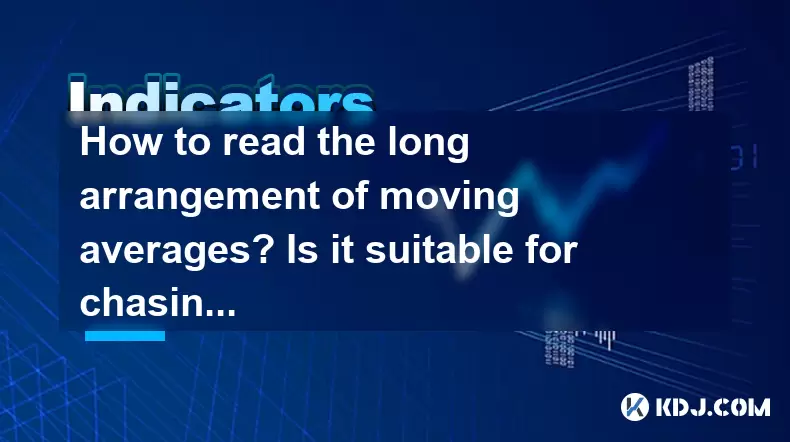
Understanding the Concept of Moving Averages
Moving averages (MA) are among the most commonly used technical indicators in cryptocurrency trading. They help traders smooth out price data over a specific time period, allowing for clearer trend identification. The long arrangement of moving averages typically refers to using multiple MAs with longer time frames, such as the 50-day, 100-day, and 200-day moving averages.
In crypto markets, where volatility is high and trends can change rapidly, understanding how these long-term MAs align is crucial. Traders often look at their sequence or stacking to determine whether a market is in a strong uptrend or downtrend. This configuration is known as a "moving average ribbon" when several MAs are plotted together.
The long arrangement helps filter out short-term noise and provides a more reliable signal for medium to long-term positions.
How to Interpret the Long Arrangement of Moving Averages
Interpreting the long arrangement of moving averages involves observing how different MAs stack up relative to each other. When shorter-term MAs like the 50-day sit above the 100-day and 200-day lines, it signals a bullish alignment. Conversely, if the 50-day MA falls below the 100-day and 200-day, it indicates bearish pressure.
This visual stacking allows traders to identify momentum without needing complex tools. For example, during a strong rally in Bitcoin (BTC), you might see the 50-day MA rising sharply above the 100-day and 200-day, creating a widening gap between them. This is often interpreted as a sign of sustained upward momentum.
- Rising and spreading apart MAs indicate increasing strength.
- Falling and narrowing MAs suggest weakening momentum.
Traders should also watch for crossovers between these long-term MAs, which may signal potential trend reversals or continuations.
Is It Suitable for Chasing Up?
Chasing up in trading means entering a position after a significant move has already occurred. Whether the long arrangement of moving averages supports chasing depends on several factors:
- If the price is significantly above all long-term MAs, it could mean the asset is overextended and due for a pullback.
- If the MAs are still aligned bullishly but price hasn’t deviated too far, there might still be room for continuation.
Many novice traders make the mistake of buying into a rally solely based on the alignment of MAs without considering overbought conditions or volume support. In volatile crypto markets, this can lead to losses if the trend reverses suddenly.
Therefore, while the long MA arrangement can provide guidance, it should not be the sole basis for chasing an entry point.
Combining Other Indicators for Confirmation
To enhance the reliability of the long arrangement of moving averages, traders often combine it with other technical tools:
- Relative Strength Index (RSI): Helps determine whether the asset is overbought or oversold.
- Volume indicators: Confirm whether the movement is backed by strong buyer interest.
- MACD (Moving Average Convergence Divergence): Offers insights into trend momentum and possible reversals.
For instance, if the long-term MAs are aligned upwards, RSI is under 70 (not overbought), and volume surges accompany the price rise, it strengthens the case for a sustainable uptrend. On the contrary, if RSI is above 70 and volume declines despite rising prices, caution is warranted.
Using multiple indicators alongside the long MA arrangement creates a more robust trading strategy, especially in unpredictable crypto markets.
Practical Steps to Apply the Long MA Arrangement
Here’s how you can practically apply the long arrangement of moving averages in your trading setup:
- Choose your preferred time frame: Daily charts are ideal for observing long MA arrangements.
- Add the 50-day, 100-day, and 200-day MAs to your chart.
- Observe the stacking order: Check if the 50-day MA is above the 100-day and both are above the 200-day.
- Analyze recent price action: See if the price is holding above or below the nearest MA.
- Look for crossovers or divergence: These can signal changes in trend strength.
- Use additional tools for confirmation: As mentioned earlier, incorporate RSI, MACD, and volume indicators.
By following these steps, traders can better assess whether the current alignment supports a bullish or bearish bias and decide whether to enter or wait for a better opportunity.
It's important to note that no single method guarantees success, but combining techniques increases the probability of making informed decisions.
Frequently Asked Questions
Q: Can I use the long MA arrangement for intraday trading?
A: While the long MA arrangement is primarily suited for daily or weekly charts, some traders adapt it to higher time frames like 4-hour charts. However, its effectiveness diminishes in fast-moving intraday sessions due to increased noise and false signals.
Q: What happens when the 50-day MA crosses below the 200-day MA?
A: This is known as a death cross, indicating a potential bearish reversal. It suggests that short-term momentum is weakening compared to long-term trends and is often seen as a sell signal by technical analysts.
Q: Should I always follow the direction of the long MA arrangement?
A: Not necessarily. While the MA arrangement provides directional bias, it doesn't account for market sentiment, news events, or macroeconomic factors. Always consider broader context before making a trade decision.
Q: Are there alternative versions of the MA arrangement?
A: Yes, some traders use variations like the Golden Cross (when the 50-day MA crosses above the 200-day) or Triple Cross strategies involving three MAs. Others create ribbons with even more MAs to visualize trend strength more clearly.
Disclaimer:info@kdj.com
The information provided is not trading advice. kdj.com does not assume any responsibility for any investments made based on the information provided in this article. Cryptocurrencies are highly volatile and it is highly recommended that you invest with caution after thorough research!
If you believe that the content used on this website infringes your copyright, please contact us immediately (info@kdj.com) and we will delete it promptly.
- As the Digital Asset Class Evolves, the Focus Shifts From Beta to Alpha
- 2025-06-15 08:25:12
- Introducing Bitcoin Solaris: Mobile Bitcoin (BTC-S) Mining for Everyday Users
- 2025-06-15 08:25:12
- Roswell Becomes the First U.S. City to Create a Bitcoin Reserve
- 2025-06-15 08:20:13
- Imagine your investments working around the clock, scanning global markets for the best opportunities
- 2025-06-15 08:20:12
- Bo Hines Outlines Trump Administration's Aggressive Push to Make the U.S. a Global Cryptocurrency Leader
- 2025-06-15 08:15:13
- BNB Chain Launches Gas-Free Carnival to Eliminate Transaction Fees for Stablecoin Transfers
- 2025-06-15 08:15:13
Related knowledge
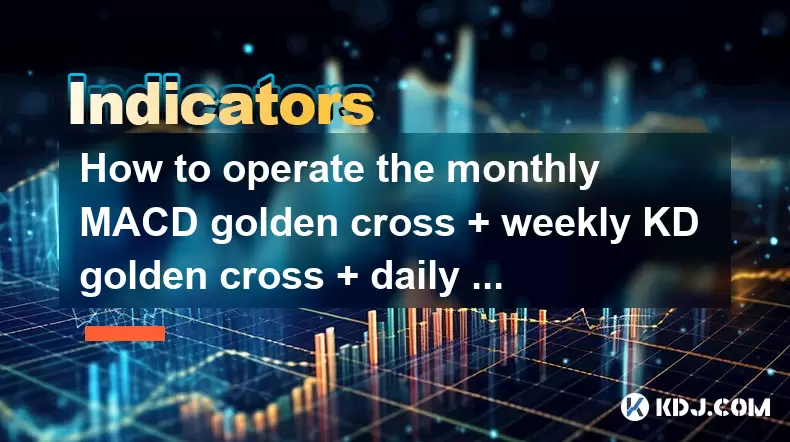
How to operate the monthly MACD golden cross + weekly KD golden cross + daily volume breakthrough?
Jun 15,2025 at 05:36am
Understanding the Strategy: Monthly MACD Golden CrossTo effectively operate the monthly MACD golden cross, traders must first understand what this signal entails. The MACD (Moving Average Convergence Divergence) golden cross occurs when the MACD line crosses above the signal line on a given chart timeframe. When this happens on the monthly chart, it sug...
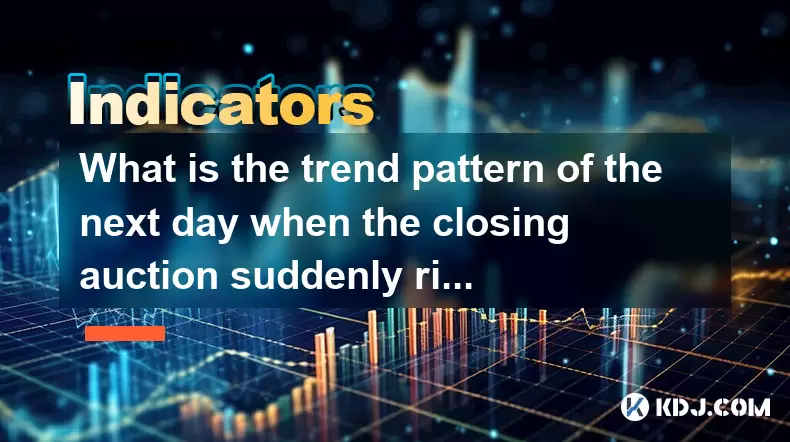
What is the trend pattern of the next day when the closing auction suddenly rises?
Jun 15,2025 at 08:15am
Understanding Closing Auctions in Cryptocurrency MarketsIn the context of cryptocurrency trading, a closing auction refers to a mechanism used by exchanges to determine the closing price of an asset at the end of a trading session. This process typically occurs within a short time window before the market closes for the day and aims to provide a fair an...
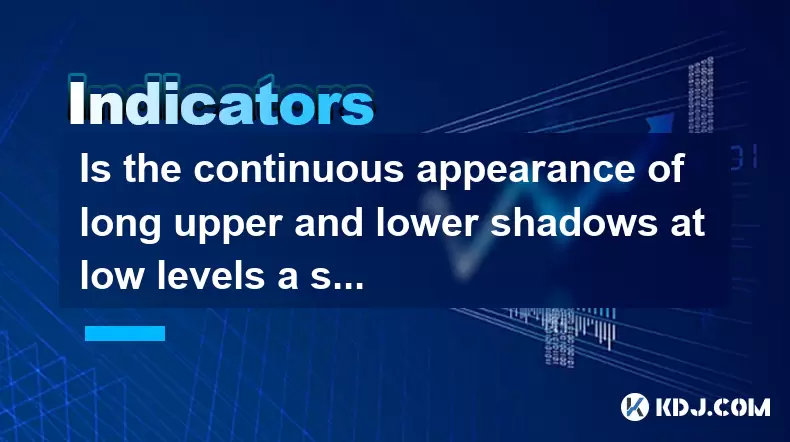
Is the continuous appearance of long upper and lower shadows at low levels a signal of accumulation?
Jun 15,2025 at 01:43am
Understanding Long Upper and Lower Shadows in Candlestick ChartsIn the world of cryptocurrency trading, candlestick patterns are widely used to analyze price movements. A long upper shadow, also known as a wick or tail, indicates that the price rose significantly during the period but was pushed back down by selling pressure. Conversely, a long lower sh...
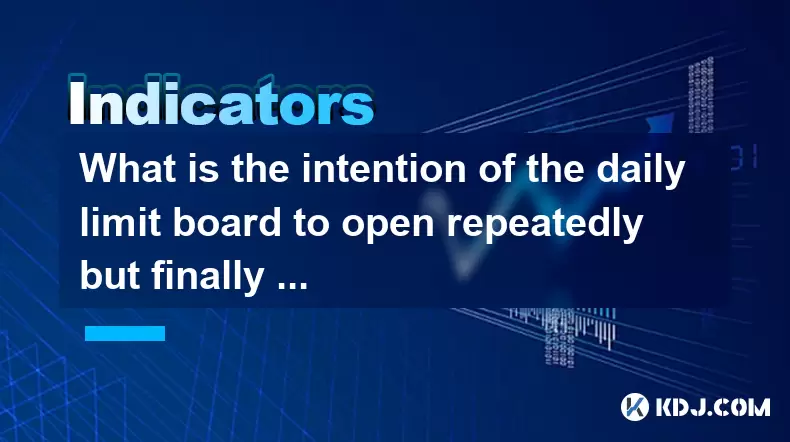
What is the intention of the daily limit board to open repeatedly but finally close?
Jun 15,2025 at 01:08am
Understanding the Daily Limit Board in Cryptocurrency TradingIn cryptocurrency trading, a daily limit board refers to a price movement restriction mechanism applied by certain exchanges or regulatory bodies. This mechanism is primarily used to prevent extreme volatility and panic selling or buying during periods of intense market fluctuation. When an as...

How to calculate the probability of trend continuation after the MACD column divergence?
Jun 14,2025 at 08:01am
Understanding MACD Column DivergenceThe Moving Average Convergence Divergence (MACD) is a widely used technical indicator in cryptocurrency trading. The MACD column, also known as the histogram, represents the difference between the MACD line and the signal line. When price makes a new high or low but the MACD histogram does not confirm this movement, a...
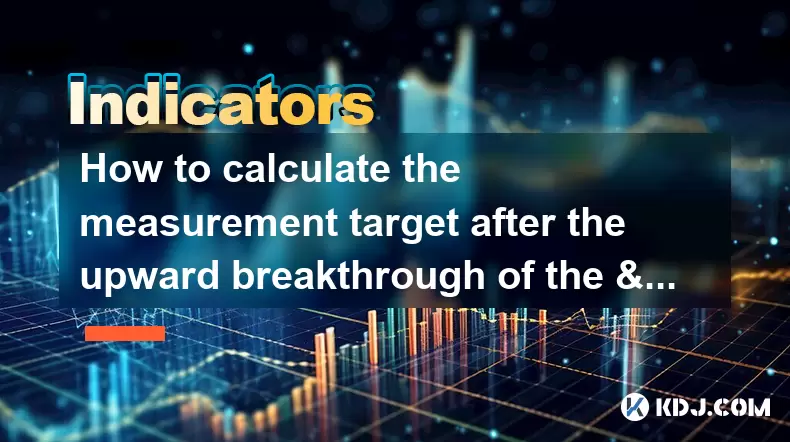
How to calculate the measurement target after the upward breakthrough of the "descending wedge"?
Jun 15,2025 at 05:00am
Understanding the Descending Wedge PatternA descending wedge is a technical analysis pattern typically found in price charts of cryptocurrencies. It is characterized by two converging trendlines: one drawn along a series of lower highs (resistance) and another connecting a series of higher lows (support). This pattern usually indicates a potential bulli...

How to operate the monthly MACD golden cross + weekly KD golden cross + daily volume breakthrough?
Jun 15,2025 at 05:36am
Understanding the Strategy: Monthly MACD Golden CrossTo effectively operate the monthly MACD golden cross, traders must first understand what this signal entails. The MACD (Moving Average Convergence Divergence) golden cross occurs when the MACD line crosses above the signal line on a given chart timeframe. When this happens on the monthly chart, it sug...

What is the trend pattern of the next day when the closing auction suddenly rises?
Jun 15,2025 at 08:15am
Understanding Closing Auctions in Cryptocurrency MarketsIn the context of cryptocurrency trading, a closing auction refers to a mechanism used by exchanges to determine the closing price of an asset at the end of a trading session. This process typically occurs within a short time window before the market closes for the day and aims to provide a fair an...

Is the continuous appearance of long upper and lower shadows at low levels a signal of accumulation?
Jun 15,2025 at 01:43am
Understanding Long Upper and Lower Shadows in Candlestick ChartsIn the world of cryptocurrency trading, candlestick patterns are widely used to analyze price movements. A long upper shadow, also known as a wick or tail, indicates that the price rose significantly during the period but was pushed back down by selling pressure. Conversely, a long lower sh...

What is the intention of the daily limit board to open repeatedly but finally close?
Jun 15,2025 at 01:08am
Understanding the Daily Limit Board in Cryptocurrency TradingIn cryptocurrency trading, a daily limit board refers to a price movement restriction mechanism applied by certain exchanges or regulatory bodies. This mechanism is primarily used to prevent extreme volatility and panic selling or buying during periods of intense market fluctuation. When an as...

How to calculate the probability of trend continuation after the MACD column divergence?
Jun 14,2025 at 08:01am
Understanding MACD Column DivergenceThe Moving Average Convergence Divergence (MACD) is a widely used technical indicator in cryptocurrency trading. The MACD column, also known as the histogram, represents the difference between the MACD line and the signal line. When price makes a new high or low but the MACD histogram does not confirm this movement, a...

How to calculate the measurement target after the upward breakthrough of the "descending wedge"?
Jun 15,2025 at 05:00am
Understanding the Descending Wedge PatternA descending wedge is a technical analysis pattern typically found in price charts of cryptocurrencies. It is characterized by two converging trendlines: one drawn along a series of lower highs (resistance) and another connecting a series of higher lows (support). This pattern usually indicates a potential bulli...
See all articles

























































































